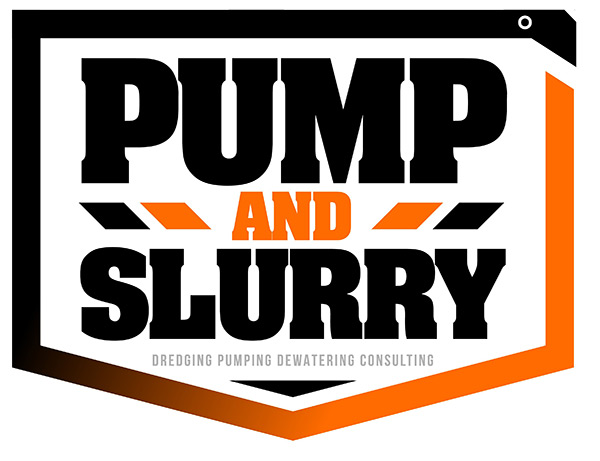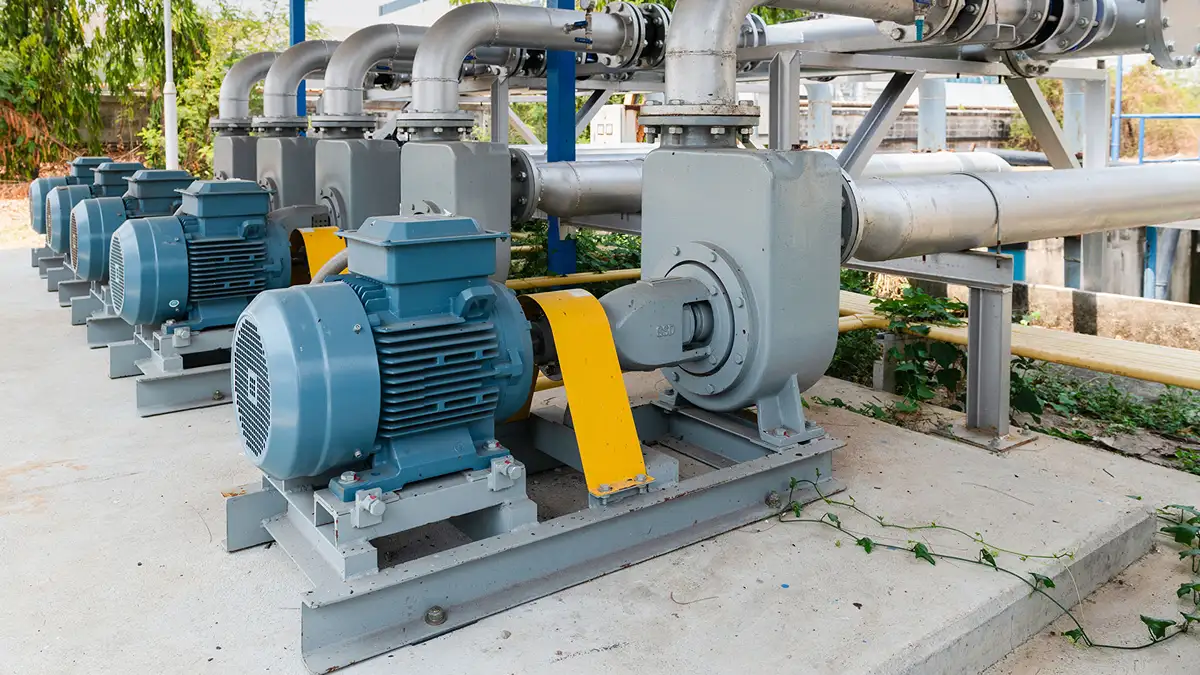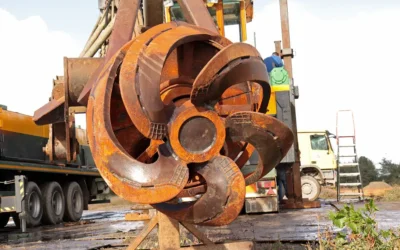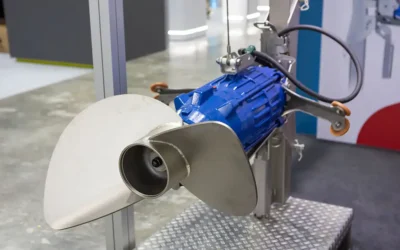Managing high-solids content in industrial processes is one of the most persistent challenges faced by operators across heavy-duty sectors. Whether dealing with abrasive mining tailings, viscous refinery waste, or sludge accumulation in municipal treatment plants, the efficient handling of these materials is critical to maintaining operational continuity, environmental compliance, and equipment longevity.
In industries such as mining, oil and gas, municipal wastewater treatment, and military infrastructure, failure to manage sludge properly can result in clogged systems, costly downtime, and long-term damage to critical assets. As the composition of waste becomes increasingly complex, with higher concentrations of solids, chemicals, and corrosive compounds, the need for purpose-built pumping technology has become more pronounced.
This is where the industrial sludge pump proves essential. Unlike standard pumps that struggle with viscosity and abrasive particulates, an industrial sludge pump is specifically engineered to handle thick, high-solids mixtures without compromising performance. These pumps are not only designed for durability and throughput but also provide significant cost savings over time by reducing maintenance frequency, improving uptime, and enhancing waste handling efficiency.
In particular, the use of a submersible sludge pump offers unique advantages in submerged or space-constrained environments, enabling efficient sludge removal from tanks, pits, and confined systems. For engineering managers, procurement heads, and project contractors, selecting the right sludge pump is a strategic decision that directly impacts ROI, compliance, and long-term reliability.
What Is an Industrial Sludge Pump?
An industrial sludge pump is a heavy-duty pumping solution specifically designed to move thick, abrasive, and semi-solid materials such as slurry, sludge, and sediment-laden liquids. These mixtures are often too dense or corrosive for standard pumps, making specialized sludge-handling equipment essential in demanding industrial environments.
At its core, a sludge pump is built to handle fluids containing a high concentration of suspended solids. Unlike conventional pumps, which can clog, wear out, or lose efficiency when exposed to abrasive or viscous materials, an industrial sludge pump is engineered for durability, consistent flow, and resistance to abrasion and corrosion. Common features include oversized impellers, reinforced casings, and materials selected for maximum wear resistance, such as hardened alloys or rubber linings.
There are several types of sludge pumps available, each tailored to specific operational needs. One of the most versatile and widely used configurations is the submersible sludge pump. Installed directly in the sludge or slurry pit, a submersible sludge pump eliminates the need for priming, reduces suction losses, and minimizes the risk of cavitation. Its compact footprint and ability to operate in flooded or confined spaces make it especially valuable for underground mines, wastewater treatment tanks, and dewatering operations in oil and gas or military facilities.
The application of an industrial sludge pump is critical in industries such as:
- Mining: For transporting mineral slurries, tailings, and overburden waste.
- Oil and Gas: In tank bottom cleaning, drilling mud transfer, and refinery waste handling.
- Municipal and Utility Operations: For sewage sludge removal and stormwater pumping.
- Defense and Naval Infrastructure: To manage silt and sludge accumulation in dry docks and marine bases.
In each of these sectors, the correct selection and deployment of a high-performance sludge pump or submersible sludge pump directly impacts system reliability, environmental compliance, and operational efficiency. These pumps are not just components: they are critical assets that support the uninterrupted flow of industrial processes and reduce the total cost of ownership over the long term.
Why Standard Pumps Fall Short in High-Solids Environments
In high-solids applications, standard pumps often fail to meet the performance demands of industrial operations. Designed primarily for clean or low-viscosity fluids, conventional pumps are not built to handle the abrasive, dense, and sometimes corrosive nature of sludge. As a result, they are prone to frequent clogging, excessive wear, and reduced operational lifespan, leading to unexpected downtime and costly repairs.
By contrast, an industrial sludge pump is purpose-built for environments where solids concentration is high and flow consistency is critical. Standard pumps lack the structural integrity, component durability, and hydraulic design required to process sludge reliably. In industries such as mining, oil and gas, municipal wastewater management, and naval engineering, attempting to move thick, particulate-laden materials with unsuitable equipment creates ongoing maintenance burdens and operational risk.
The design limitations of conventional pumps become even more pronounced in confined or submerged applications. For example, systems that operate below grade, in sumps, or in flooded areas often struggle with priming issues or cavitation when using standard pumps. In these cases, a submersible sludge pump offers a far more effective solution. A submersible sludge pump is installed directly in the fluid, eliminating suction limitations and enabling efficient pumping of high-solids sludge without air entrainment or dry-run damage.
An industrial sludge pump also incorporates advanced features such as open impeller designs, wear-resistant materials, and large internal clearances to handle solids without blockage. These characteristics allow the sludge pump to maintain consistent throughput even under punishing conditions: conditions where standard pumps typically fail.
Ultimately, the choice between a standard pump and an industrial sludge pump comes down to reliability, efficiency, and cost control. In high-solids environments, investing in the right sludge pump technology isn’t just about immediate performance; it’s about minimizing system failures, extending equipment life, and ensuring uninterrupted operation in critical applications.

Types of Sludge Pumps & Their Strengths
Selecting the right sludge pump is essential for effective high-solids handling. While the term industrial sludge pump encompasses a range of technologies, each type serves distinct operational needs based on material properties, site conditions, and system requirements. Understanding the strengths of each option helps decision-makers in mining, oil and gas, municipal, and military sectors choose the most effective and efficient solution.
Centrifugal Sludge Pumps
The centrifugal industrial sludge pump is a workhorse in high-volume, abrasive applications. Utilizing a rotating impeller to impart kinetic energy, these pumps are well-suited for moving semi-solid mixtures in continuous-flow systems. Their simple design, ease of maintenance, and reliability make them a staple in municipal wastewater treatment plants and mineral processing facilities.
Built with hardened impellers and wear-resistant linings, centrifugal sludge pumps offer excellent longevity under tough operating conditions.
Submersible Sludge Pumps
A submersible sludge pump is engineered to operate while fully submerged in sludge or slurry. This design eliminates the need for priming and minimizes suction lift limitations, making it especially effective in confined pits, tanks, or flood-prone environments.
Thanks to their compact footprint and direct immersion capabilities, submersible sludge pumps are widely used in applications such as dewatering, tank bottom cleaning, and sediment removal in naval bases or oil and gas installations. As part of a broader industrial sludge pump strategy, submersibles offer versatility and reduced installation complexity.
Heavy-Duty Slurry Pumps
Heavy-duty slurry pumps, often categorized under the industrial sludge pump umbrella, are specifically designed for the most abrasive and corrosive materials. These pumps feature reinforced casings, oversized solids handling capability, and materials that withstand continuous exposure to harsh media.
Commonly found in mining operations, dredging projects, and other high-wear environments, heavy-duty slurry pumps deliver maximum durability and uptime in conditions where standard sludge pumps would quickly degrade.
Positive Displacement and Diaphragm Pumps
For processes requiring low flow rates but high precision, positive displacement sludge pumps and air-operated diaphragm pumps are preferred. These pumps are ideal for highly viscous sludge, dewatering systems, and chemical dosing where steady, pulse-free flow is needed.
Though not as fast as centrifugal models, these pumps are a critical part of many industrial sludge pump systems, particularly in food processing, pharmaceutical waste handling, and small-scale municipal facilities.
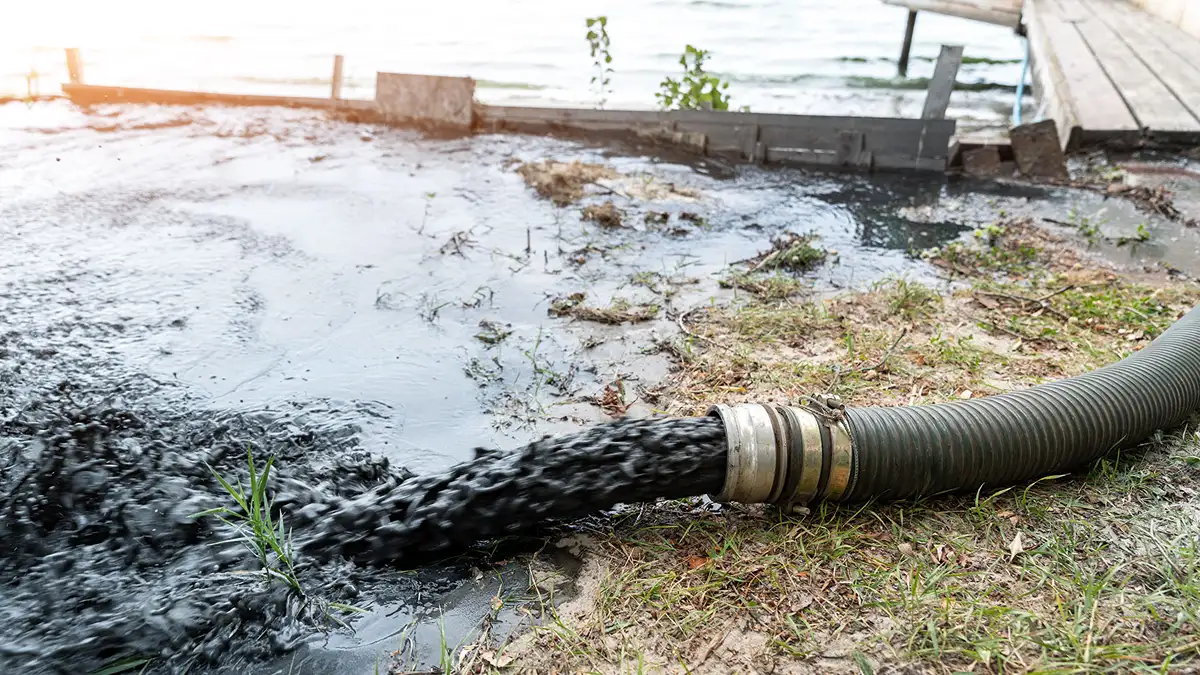
Key Benefits of Using an Industrial Sludge Pump
Choosing the right industrial sludge pump has a direct impact on system performance, operational costs, and long-term infrastructure integrity. Unlike conventional equipment, a well-designed sludge pump can efficiently manage high-solids content with minimal maintenance, ensuring consistent output and reduced lifecycle costs.
From mining and municipal utilities to oil and gas or military facilities, the right submersible sludge pump or centrifugal industrial sludge pump can significantly improve the reliability, safety, and profitability of sludge handling operations.
Operational Efficiency in Harsh Conditions
An industrial sludge pump is purpose-built to perform under the most challenging conditions: high viscosity, abrasive solids, corrosive fluids, and variable flow rates. Standard pumps often suffer from clogging or cavitation when handling sludge, but a properly selected sludge pump maintains flow consistency and throughput without frequent shutdowns or manual intervention.
A submersible sludge pump goes even further by operating directly in the fluid, eliminating suction loss and improving hydraulic efficiency in submerged or space-limited environments.
Lower Maintenance and Reduced Downtime
One of the most tangible advantages of an industrial sludge pump is reduced maintenance frequency. Designed with wear-resistant materials, open impellers, and simplified mechanical designs, modern sludge pumps can operate longer between service intervals. This translates into less unplanned downtime, fewer repair costs, and improved asset availability.
With a submersible sludge pump, the absence of external piping and priming systems reduces potential failure points, especially in installations with limited access or submerged infrastructure.
Improved Cost Control and ROI
Effective sludge management lowers operational expenses by reducing transport volumes, energy use, and repair costs. By efficiently dewatering and moving sludge, an industrial sludge pump contributes to lower sludge disposal costs and improved system economics.
Organizations that invest in high-quality sludge pumps benefit from longer service life, lower total cost of ownership, and faster return on investment, especially in capital-intensive industries such as mining or refining.
Enhanced Environmental Compliance
Handling sludge effectively isn’t just an operational need: it’s a regulatory requirement. An industrial sludge pump helps ensure compliance with environmental standards by minimizing overflows, leaks, and containment failures. Dewatered sludge can be processed or transported more safely, while recovered water can be recycled for non-potable uses like dust suppression or equipment cleaning.
In confined areas or flood-prone zones, a submersible sludge pump provides an added layer of reliability by operating directly in the sludge without compromising containment or safety.
Infrastructure Protection and Site Longevity
Prolonged sludge buildup can damage tanks, pipelines, foundations, and surrounding structures. By implementing a robust sludge pump system, facilities can proactively manage sediment levels, prevent erosion, and maintain structural integrity.
In military bases, mining sites, and industrial plants, where infrastructure is mission-critical, the reliability of an industrial sludge pump directly contributes to long-term site resilience and reduced capital reinvestment.
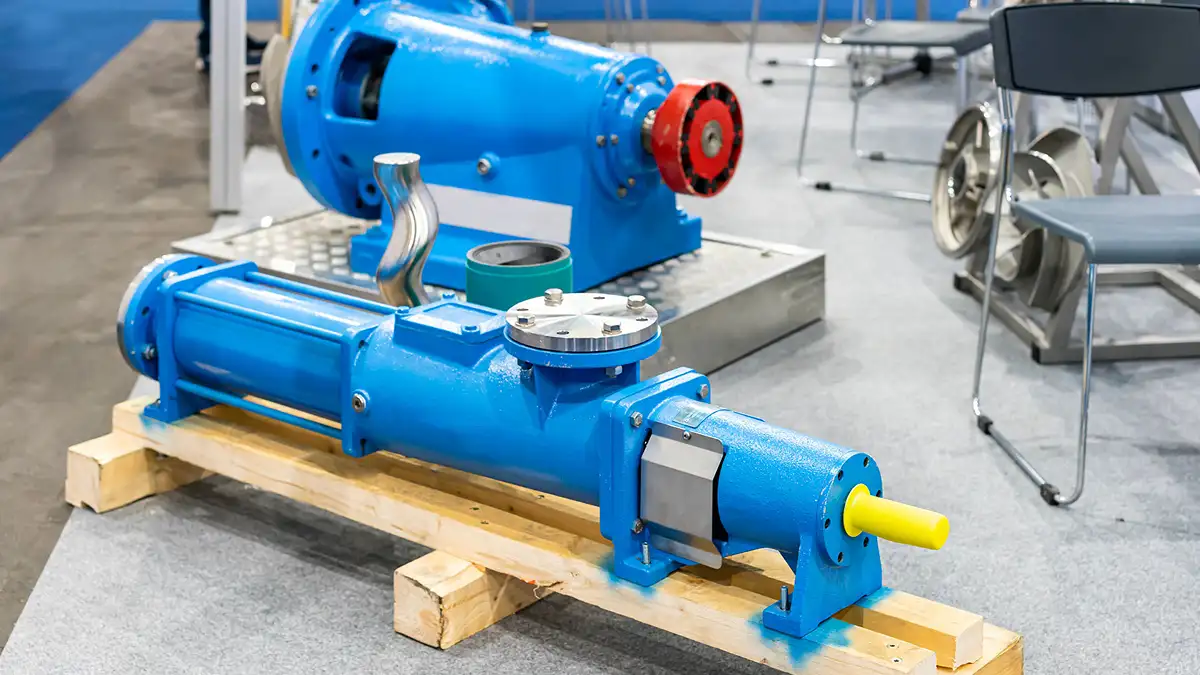
Real-World Applications
The versatility and durability of the industrial sludge pump make it a critical asset in industries where high-solids content, abrasive materials, and continuous operation are daily challenges. Whether installed in remote mining operations, oil refineries, municipal treatment plants, or naval facilities, the sludge pump plays a vital role in maintaining system performance and environmental compliance.
Below are some of the most common and high-value applications of industrial sludge pumps and submersible sludge pumps across key sectors.
Mining and Mineral Processing
In mining operations, managing tailings, slurry, and sediment buildup is essential to avoid production delays and equipment damage. An industrial sludge pump is used to transport abrasive mineral slurries, dewater pits, and handle thick tailings from processing facilities.
Submersible sludge pumps are often deployed in remote or below-ground mine shafts where access is limited and high-reliability equipment is needed to keep operations running around the clock. Their ability to handle coarse particles and operate underwater makes them indispensable for both routine and emergency dewatering.
Oil and Gas Facilities
Refineries, drilling sites, and petrochemical plants deal with dense sludges from tank bottoms, separators, and processing equipment. An industrial sludge pump is used to move heavy hydrocarbons, spent drilling fluids, and sludge with high viscosity or chemical content.
In confined sumps and flooded tanks, submersible sludge pumps provide a low-maintenance, high-efficiency solution that reduces manual labor and exposure to hazardous materials. Their ability to operate submerged allows for continuous cleanup in areas where traditional pumps would fail or require extensive infrastructure.
Municipal Wastewater Treatment
Municipalities rely on sludge pumps to manage everything from primary sludge to thickened waste activated sludge (TWAS). An industrial sludge pump ensures consistent transfer of these materials between treatment stages, contributing to effective dewatering and biosolid processing.
Submersible sludge pumps are especially common in lift stations, digesters, and sludge holding tanks, where space constraints and wet environments demand compact, corrosion-resistant solutions.
Military and Naval Infrastructure
Naval dry docks, marine bases, and coastal defense installations often struggle with sediment buildup, bilge sludge, and silt contamination. A rugged industrial sludge pump is essential in these environments for the rapid removal of heavy sludge that would otherwise compromise infrastructure or delay operations.
A submersible sludge pump can be deployed in underwater or confined environments where rapid response and operational resilience are mission-critical. These pumps support emergency dewatering, environmental containment, and routine maintenance in high-security or hard-to-access areas.
Heavy Industry and Power Generation
Pulp and paper mills, steel plants, and thermal power stations generate large volumes of sludge as a byproduct of their industrial processes. An industrial sludge pump provides reliable handling of lime sludge, fly ash slurries, and byproduct waste streams without clogging or excessive wear.
The integration of submersible sludge pumps in sumps and process basins helps maintain cleanliness, reduces manual cleaning efforts, and prevents costly shutdowns due to solids buildup or blockages.
Choosing the Right Sludge Pump for Your Operation
Selecting the appropriate industrial sludge pump is a critical decision that impacts operational reliability, total cost of ownership, and environmental compliance. With multiple configurations available, ranging from centrifugal to submersible sludge pumps, choosing the right model requires a detailed understanding of your application’s physical, chemical, and logistical demands.
An effective sludge pump selection process should consider factors such as solids concentration, flow rate, pressure requirements, and installation constraints. Below are key criteria to help guide decision-makers in identifying the most suitable industrial sludge pump for their operation.
Understand the Solids Content and Sludge Properties
The first step in selecting a sludge pump is evaluating the nature of the material to be pumped. Is the sludge highly viscous, fibrous, or abrasive? Does it contain large solid particles, or is it a fine suspension?
- For high-abrasion or coarse solids, a heavy-duty industrial sludge pump with hardened components is recommended.
- In situations with highly viscous or shear-sensitive materials, a positive displacement sludge pump may offer better control and consistency.
Understanding the sludge’s characteristics helps narrow down the type of pump best suited to maintain efficient flow without excessive wear or blockage.
Assess Installation Environment
The installation location: above ground, below grade, submerged, or confined, plays a significant role in pump selection. If the sludge must be handled from a flooded sump, pit, or tank, a submersible sludge pump offers a practical and space-efficient solution.
Submersible sludge pumps are designed to operate fully immersed, eliminating suction lift limitations and reducing the need for complex piping systems. They are particularly valuable in wastewater plants, oil refineries, mining tunnels, and naval docks where vertical space is limited or access is restricted.
For above-ground applications, centrifugal industrial sludge pumps provide easy access for maintenance and typically support higher flow rates.
Evaluate Flow Rate and Head Requirements
Understanding your system’s flow and pressure demands is essential when choosing a sludge pump. Undersized pumps will struggle with throughput and can overheat, while oversized pumps may incur unnecessary energy costs.
- Use detailed process data to calculate required flow (GPM) and total dynamic head (TDH).
- Match pump performance curves with expected operating conditions to ensure long-term efficiency.
An industrial sludge pump should be selected not just for current loads, but with room for future scaling or variability in sludge composition.
Consider Abrasion, Corrosion, and Chemical Compatibility
Depending on the sludge’s chemical makeup, choosing the right pump materials is vital. Industrial applications often involve corrosive compounds, fluids with high or low pH, and abrasive particulates that can degrade standard materials quickly.
High-wear applications benefit from sludge pumps constructed with rubber-lined or metal-hardened components. In chemically aggressive environments, stainless steel or special alloy configurations may be required for your industrial sludge pump to maintain performance and longevity.
Factor in Maintenance Access and Lifecycle Costs
Downtime and maintenance costs can quickly erode the value of a poorly chosen sludge pump. Look for models that offer:
- Easy access to wear parts
- Non-clogging designs
- Seal and bearing protection systems.
- Integrated monitoring options for early fault detection
In submerged applications, a high-quality submersible sludge pump should offer seal fail detection, motor protection, and overload safeguards to minimize unplanned maintenance.
Final Considerations on Industrial Sludge Pumps
Efficient sludge management is no longer optional: it’s a strategic imperative for industries operating in high-solids environments. Whether you’re managing tailings in a mine, dewatering a municipal plant, cleaning refinery tanks, or maintaining naval infrastructure, investing in the right industrial sludge pump directly translates to improved uptime, reduced operational costs, and long-term system resilience.
Unlike standard pumping systems, a well-engineered sludge pump, especially when designed for heavy-duty applications, can handle the abrasive, viscous, and unpredictable nature of industrial sludge without frequent breakdowns. From centrifugal to submersible sludge pump configurations, each type of pump brings specific performance advantages that align with your site’s unique needs.
Beyond performance, the right industrial sludge pump improves environmental compliance, enhances worker safety, and preserves critical infrastructure from sludge-related damage. It is not merely a piece of equipment but a foundational component in ensuring operational continuity across mining, oil and gas, municipal, and defense sectors.
Reach out to our experts today to discuss how the right industrial sludge pump can optimize your high-solids handling operations and maximize your ROI.




